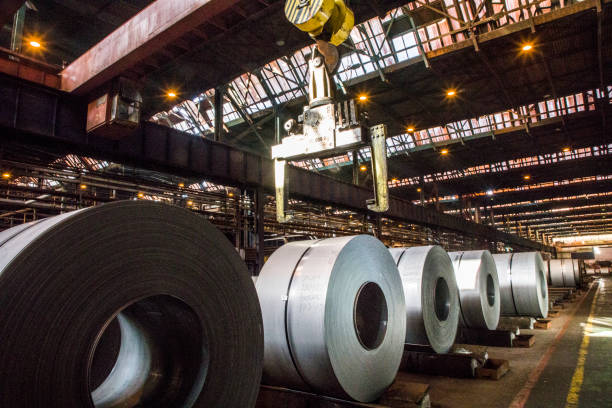Table of Contents
Steel has been integral in building modern infrastructure, shaping our cities and improving our daily lives. This article explores the indispensable role of steel in today&8217;s world through various lenses.
The Evolution of Steel in Construction
Steel&8217;s role in construction began in the 19th century, replacing wood, brick, and stone with the Bessemer process, making it more accessible and affordable. This enabled architects to build complex structures, such as the Home Insurance Building in Chicago, and has since been crucial in various infrastructure projects.
Strength and Durability
Steel&8217;s strength and durability make it ideal for construction, including skyscrapers, bridges, and transportation networks. It can withstand harsh weather conditions, fires, and earthquakes, and with proper maintenance, it can last for decades or centuries, reducing lifecycle costs.
Versatility and Flexibility
Steel&8217;s versatility is another attribute that makes it invaluable in modern infrastructure. Architects and engineers can mold and shape steel into virtually any form, facilitating innovative designs and architectural marvels. Its ability to be prefabricated also speeds up construction times and ensures precision. Prefabrication means steel components can be made off-site, transported, and then easily assembled on-site, reducing labor costs and construction times. This flexibility extends to retrofitting and expanding existing infrastructure. Buildings and bridges often need to grow or adapt to new requirements, and steel&8217;s adaptable nature makes these modifications easier and more cost-effective.
Environmental Impact and Sustainability
While steel production has historically been energy-intensive, recent advancements have significantly reduced its carbon footprint. Modern steel manufacturing processes are more energy-efficient and generate fewer emissions. Additionally, steel is highly recyclable. Most steel products contain around 25% recycled steel, and the material can be recycled indefinitely without losing its properties. This recycling capability minimizes the need for new raw materials, reducing environmental degradation. Sustainable practices in steel production include using electric arc furnaces powered by renewable energy sources, further lessening the environmental impact. Steel&8217;s longevity also means that structures last longer, reducing the need for new materials and additional construction.
Applications in Modern Infrastructure
Steel is the backbone of many modern infrastructure projects. In transportation, steel is vital for constructing bridges, tunnels, and railway tracks that facilitate efficient and safe movement. Skyscrapers, with their steel frameworks, define city skylines and offer the necessary space in densely populated urban areas. Airports, stadiums, and industrial plants also benefit from steel&8217;s strength and flexibility. Beyond its structural applications, steel pipes are crucial for water supply and wastewater management systems. Electrical and telecommunication networks often rely on steel components for durability and reliability. In essence, steel is foundational to the vast array of infrastructure we depend on daily, making modern life possible.
The Future of Steel in Construction
The future of steel in construction is promising, with ongoing innovations poised to make it even more indispensable. Research is underway to develop new steel alloys that offer improved strength, lighter weight, and greater corrosion resistance. Advances in manufacturing processes are focusing on reducing energy consumption and making production more environmentally friendly. Nanotechnology is another frontier, potentially enhancing steel&8217;s properties at the microscopic level to yield even higher performance materials. Smart steel structures, embedded with sensors and connected to the Internet of Things (IoT), may soon provide real-time data on structural health, enabling proactive maintenance and extending the lifespan of infrastructure. In summary, while challenges remain, the future of steel in shaping our world looks bright and full of potential.
Steel is likely to continue playing a key role in the development of modern infrastructure. Its unique characteristics make it indispensable for current construction needs and future innovations.


